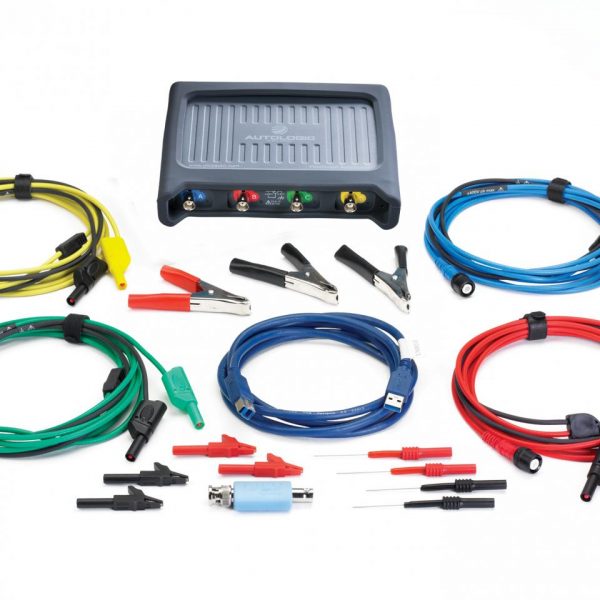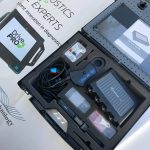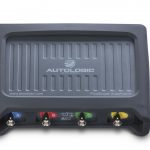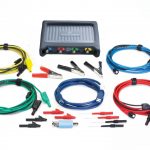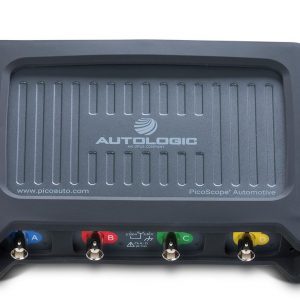OPUS PicoScope 4425A
$6,039.00 +GST
Our exciting new PicoBNC+™ probe connectivity, unique to PicoScope 4425A oscilloscopes, provides you with:
- Channel status lights to show you which probes and channels to connect and their status when you load a data file or guided test
- Smart probe interfacing so that all your probe configuration takes place in the software – no more incorrect probe switch positions!
- Powered probes that are always on and ready to go – no more flat batteries, current clamp zeroing, or auto-off!
- Future-proofing of your diagnostic capabilities as we develop new probe technologies.
- Full backwards-compatibility with BNC for all your existing PicoScope or third-party probes
All our automotive PicoScopes have the features that have already helped technicians around the world with vehicle diagnostics:
- 400 M samples/second and 20 MHz bandwidth to make sure you can test the latest vehicles such as those with high-speed FlexRay or CAN-FD networks
- 12-bit (16-bit enhanced) resolution – your waveforms in high definition
- 250 M sample memory for long-duration captures; ideal when you are trying to diagnose intermittent faults
- USB 3.0 data transfer speeds and power, providing you with high performance and portability
- Description
- Product Enquiry
Description
| Oscilloscope specifications (vertical) | ||
|---|---|---|
| Model | PicoScope 4425A | |
| Bandwidth | 20 MHz (10 MHz on ±50 mV range) | |
| Channels | 4 | |
| Vertical resolution | 12 bits | |
| Enhanced vertical resolution | 16 bits | |
| DC accuracy | ±1% of full scale | |
| Input Sensitivity | 10 mV/div to 40 V/div | |
| Input ranges (full scale) | ±50 mV to ±200 V in 12 ranges | |
| Input characteristics | 1 MΩ in parallel with 24 pF | |
| Input type | Floating single-ended BNC connector | |
| Input coupling | Software selectable AC/DC | |
| Overvoltage protection | ±250 V (DC + AC peak) | |
| Oscilloscope — horizontal | |
|---|---|
| Maximum sampling rate 1 channel in use 2 channels in use 3 or 4 channels in use |
400 MS/s 200 MS/s 100 MS/s |
| Maximum sampling rate (USB streaming) | 20 MS/s (USB 3.0) 10 MS/s (USB 2.0) |
| Buffer memory | 250 M samples |
| Waveform buffer | Up to 10,000 waveforms |
| Timebase ranges | 100 ns/div to 5000 s/div |
| Dynamic performance (typical) | |
|---|---|
| Crosstalk | 4000:1, DC to 20 MHz |
| Harmonic distortion | < −60 dB |
| SFDR | > 60 dB |
| Noise | 220 μV RMS on 50 mV range |
| Bandwidth flatness | DC to full bandwidth (+0.25 dB, −3 dB) |
| ADC ENOB | 10.8 bits |
| Triggers | |
|---|---|
| Source | Any input channel |
| Basic triggers | Auto, repeat, single, none |
| Advanced triggers | Rising edge, falling edge, edge with hysteresis, pulse width, runt pulse, dropout, windowed |
| Maximum pre-trigger delay | Up to 100% of capture length |
| Maximum post-trigger delay | Up to 4 billion samples |
| Spectrum analyzer | |||||
|---|---|---|---|---|---|
| Frequency range | DC to 20 MHz | ||||
| Display modes | Magnitude, average, peak hold | ||||
| Windowing functions | Rectangular, Gaussian, triangular, Blackman, Blackman-Harris, Hamming, Hann, flat-top | ||||
| Number of FFT points | Selectable from 128 up to 1 million in powers of 2 | ||||
| Scale / units | X axis : linear or log 10 Y axis : logarithmic (dbV, dBu, dBm, arbitrary) or linear (volts) |
||||
| Math channels | |
|---|---|
| General functions | −x, x+y, x−y, x*y, x/y, x^y, sqrt, exp, ln, log, abs, norm, sign, sin, cos, tan, arcsin, arccos, arctan, sinh, cosh, tanh, derivative, integral, delay |
| Filter functions | Low pass, high pass, band stop, band pass |
| Graphing functions | Frequency, duty cycle |
| Multi-waveform functions | Min, max, average, peak |
| Operands | Input channel, reference waveforms, time, constants, pi |
| Automatic measurements | |
|---|---|
| Scope mode | AC RMS, true RMS, cycle time, DC average, duty cycle, falling rate, fall time, frequency, high pulse width, low pulse width, maximum, minimum, peak to peak, rise time, rising rate. |
| Spectrum mode | Frequency at peak, amplitude at peak, average amplitude at peak, total power, THD %, THD dB, THD+N, SFDR, SINAD, SNR, IMD |
| Statistics | Minimum, maximum, average and standard deviation |
| Serial decoding | |
|---|---|
| Protocols | CAN, CAN FD, FlexRay, LIN, I²C, UART/RS-232, SPI, I²S |
| Inputs | All input channels with any mixture of protocols |
| Mask limit testing | |
|---|---|
| Mask generation | Auto generate from captured waveform, manual drawing, manual coordinate entry |
| Actions | Highlight on screen, select in buffer overview, activate alarm |
| Statistics | Pass/fail, failure count, total count |
| Alarms | |
|---|---|
| Initiating events | Capture, buffer full, mask fail |
| Alarm actions | Beep, play sound, stop/restart capture, run executable, save current buffer/all buffers, trigger signal generator |
| Data export | |
|---|---|
| Output file formats | .bmp, .csv, .gif, .jpg, .mat (MATLAB 4), .pdf, .png, .psdata (PicoScope data), .pssettings (PicoScope settings), .txt |
| Output functions | Copy to clipboard, print |
| Environmental | |
|---|---|
| Operating environment Temperature range Humidity |
0 °C to 40 °C (15 °C to 30 °C for quoted accuracy) 5% to 80% RH, non-condensing |
| Storage environment Temperature range Humidity |
–20 to +60°C 5% to 95% RH, non–condensing |
| Physical dimensions | |
|---|---|
| Dimensions | 190 x 160 x 40 mm (approx 7.5 x 6.3 x 1.6 in) |
| Weight | < 900 g (approx 2 lb) |
| Software | |
|---|---|
| Software included | PicoScope 6 oscilloscope software with waveform database and guided tests. PicoDiagnostics software |
| Languages | Chinese (simplified), Chinese (traditional), Czech, Danish, Dutch, English, Finnish, French, German, Greek, Hungarian, Italian, Japanese, Korean*, Norwegian, Polish, Portuguese, Romanian, Russian, Spanish, Swedish, Turkish |
For Korean software, please contact our Korean distributor Autotech
| General | |||||
|---|---|---|---|---|---|
| Additional hardware (supplied) | USB cable, user manuals | ||||
| PC requirements | Desktop or laptop running Windows 10 recommended (read more) |
||||
| PC connectivity | Powered from PC USB port (USB 3.0 / 3.1 recommended, USB 2.0 compatible). | ||||
| Power requirements | Powered from USB ports | ||||
| Safety approvals | LVD compliant | ||||
| EMC approvals | Tested to meet EN 61326-1:2006 and FCC Part 15 Subpart B | ||||
| Environmental approvals | RoHS and WEEE compliant | ||||
| Total satisfaction guarantee | In the event that this product does not fully meet your requirements you can return it for an exchange or refund. To claim, the product must be returned in good condition within 14 days. | ||||
| Warranty | 2 years | ||||




